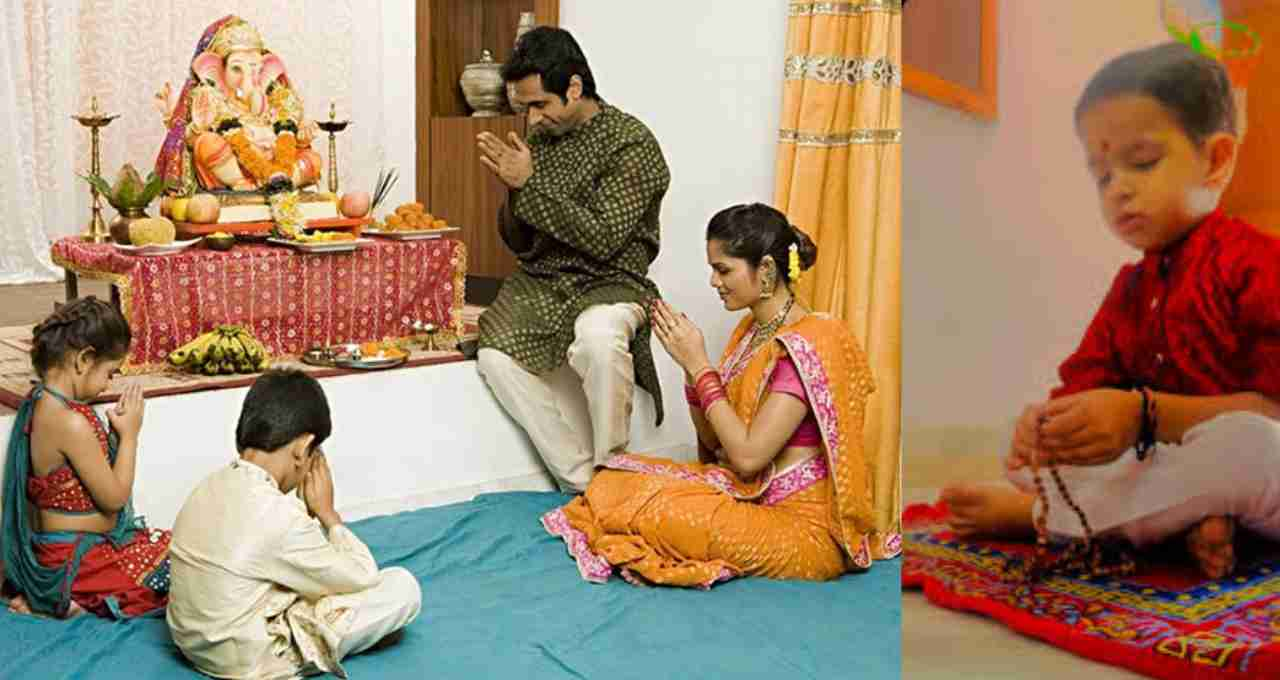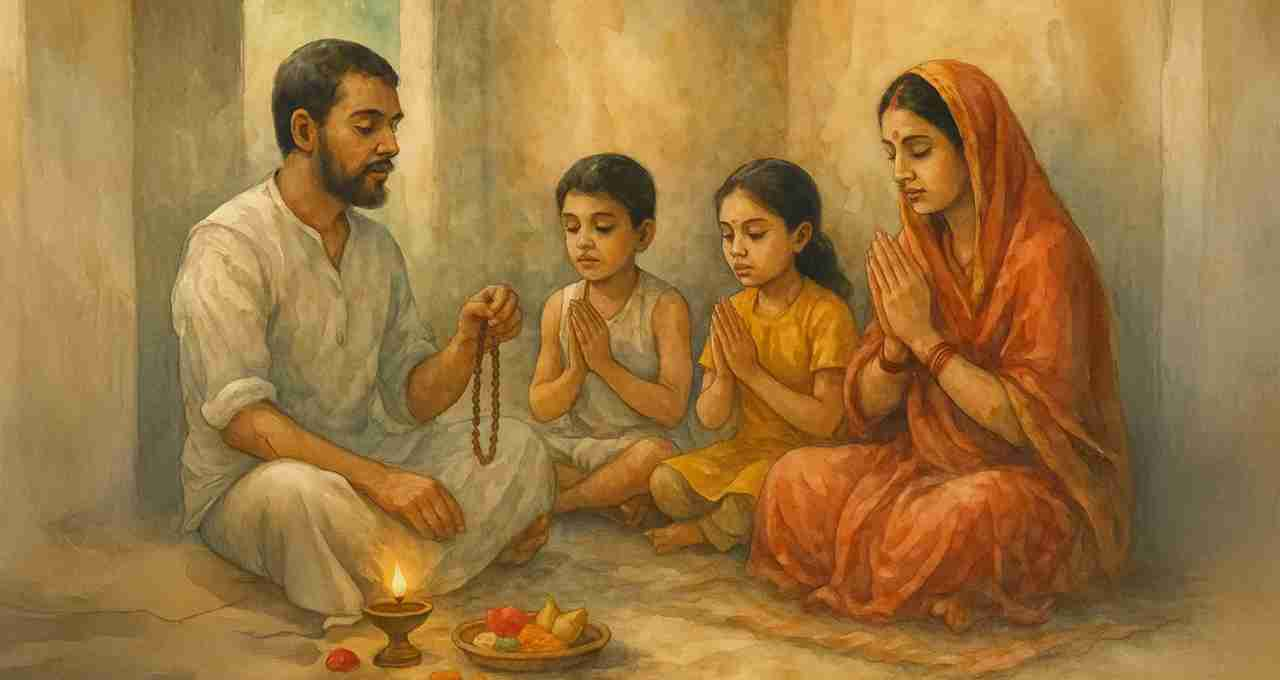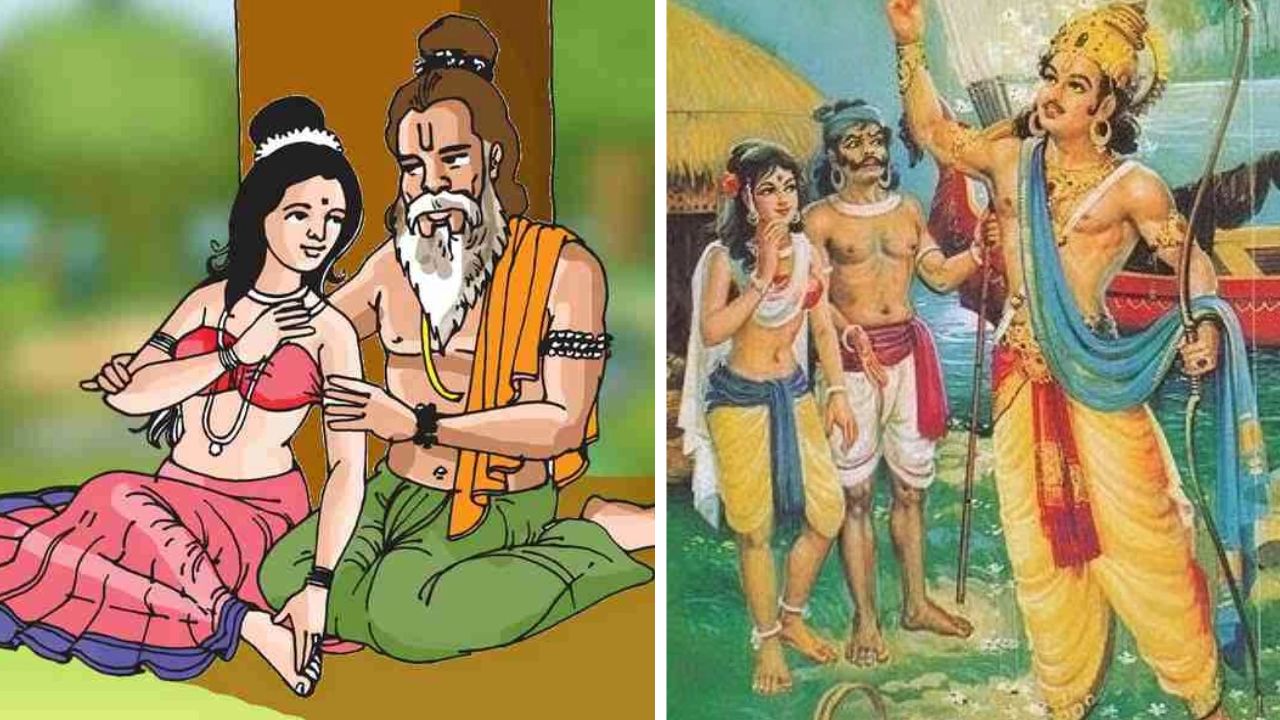The month of Sawan is not only associated with faith and devotion, but it is also a special opportunity to cultivate religious values in children. When there are prayers, hymns, and Shiva worship in the house, the atmosphere becomes completely spiritual. If children are also made a part of these religious activities at such times, then the seeds of religion, faith, and Indian culture can be easily sown in their minds.
What is learned in childhood, stays with you for life
Childhood is such a phase of human life when whatever qualities, values, or ideas are taught to children, they are deeply embedded in their character. By observing traditions like fasting, prayers, and Shiva worship in Sawan, when children participate in these activities themselves, they not only develop a religious interest but also connect deeply with the culture.
Involve children in the preparation of the Puja

Before the puja, there are many preparations in the house. Bringing flowers, collecting Bel leaves, filling the Kalash with water, decorating the lamps — all these tasks can be given to the children. When you ask them to draw a Trishul or Om on the Bel leaves, they naturally begin to understand the importance of these religious symbols. Also, their connection with nature increases through the Bel tree and flowers and leaves.
A visit to the temple will increase feelings of reverence
Many people go to the temple in the month of Sawan to perform Jalabhishek of Lord Shiva. During this time, children should also be taken to the temple. The calm and grand atmosphere of the temple impresses children. Ask them to offer water to the Shivling and explain why it is done. When they do all this with their own hands, feelings of devotion automatically arise in them.
Sing mantras and aarti together
Children may be young, but they should be introduced to religious mantras and aartis. Teach them small mantras like 'Om Namah Shivaya'. When there is aarti in the house, let them ring the bell or join in the bhajan by clapping. These small tasks make them feel a part of the worship. Also, their mind starts to revel in devotion.
Set aside special time to narrate stories of Shiva
Children love to listen to stories. In Sawan, you can tell them interesting and educational stories of Lord Shiva, Goddess Parvati, Ganesh, or Kartikeya. When you tell them how Shivaji drank the poison or how Ganesha made the mouse his vehicle, both their imagination and religious knowledge develop. Through stories, they easily understand feelings like religion, morality, and compassion.
Giving responsibility in worship will bring confidence
When children are given the responsibility of a puja, such as decorating the lamp, bringing worship material, or offering water on the Shivling, they feel special. This also increases their confidence and they start taking interest in religious activities. This process gradually leads them towards the spiritual path.
Family worship experience creates bonding

When all the members of the family worship together, children fully experience that atmosphere. Collective worship not only brings unity in the family, but children also understand that religion is not just an individual thing, but the tradition and culture of the whole family.
Understand the feeling of worship with Bel leaves, water, and lamp
Teach children why Bel leaves are offered to Shiva, why water is offered, and what is the importance of the lamp. These things will take them from the outer form of worship to the inner feeling. When they know that everything in worship has a deep meaning, they will learn to worship not just for show, but with faith.
Make Sawan a month of values
The month of Shravan is anyway a month of worship of Lord Shiva. This time brings coolness of rain after the heat and also creates a lively atmosphere of devotion in the house. By connecting children with these religious activities, you can develop true religious and cultural values within them.















